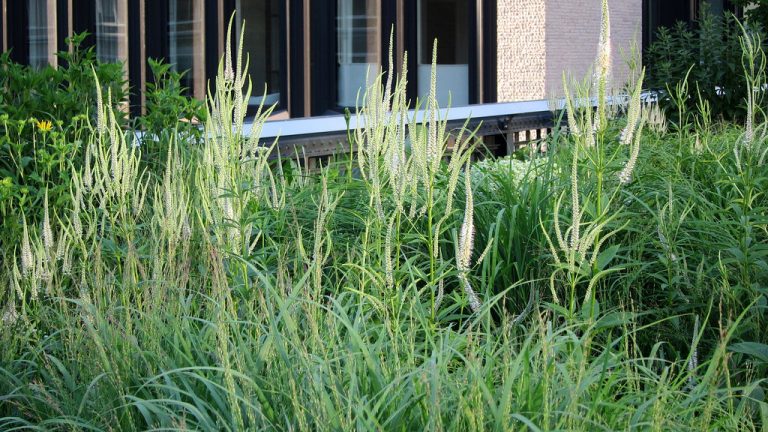This post is part of an ongoing series highlighting some of the best plants for pollinators from coast-to-coast. Drawing from our books 100 Plants to Feed the Bees, Gardening for Butterflies , and our Monarch Nectar Plant Guides.
Culver’s Root
Veranicastrum virginicum spp.
Culver’s Root has largely been ignored by beekeepers and gardeners, but has seen a surge in popularity amongst native landscapers drawn to its unique and ethereal towers of blooms. For pollinators, the bloom period fills an important gap – flowering in late May to early June, when spring ephemerals have petered out and mid-summer flowers haven’t yet opened. The densely flowered spikes can reach up to 6 feet in height and are mobbed with all manner of bees when in bloom, and often a few butterflies as well. Honey bees seem particularly drawn to the flowers suggesting the nectar is of high-quality.

Culver’s root demands full sun except when grown in hotter southern areas where it will tolerate some afternoon shade. If grown in a location that is too shady it has a tendency to “flop” and may need support. It prefers semi-moist soil and should not be allowed to dry out. After blooming, the plant produces interesting seed heads that may be left in place to be enjoyed by birds, or deadheaded to encourage a second late-season bloom. Several cultivars are available including ‘Diane’, with a more compact growing habit and ‘Lavender Towers’ with dense purple flower spikes.
Native Range: Culver’s root is native across most of eastern North America from the plains to the east coast and from northern Canada through Florida.
Best For: Providing an important source of nectar in late spring/early summer.



